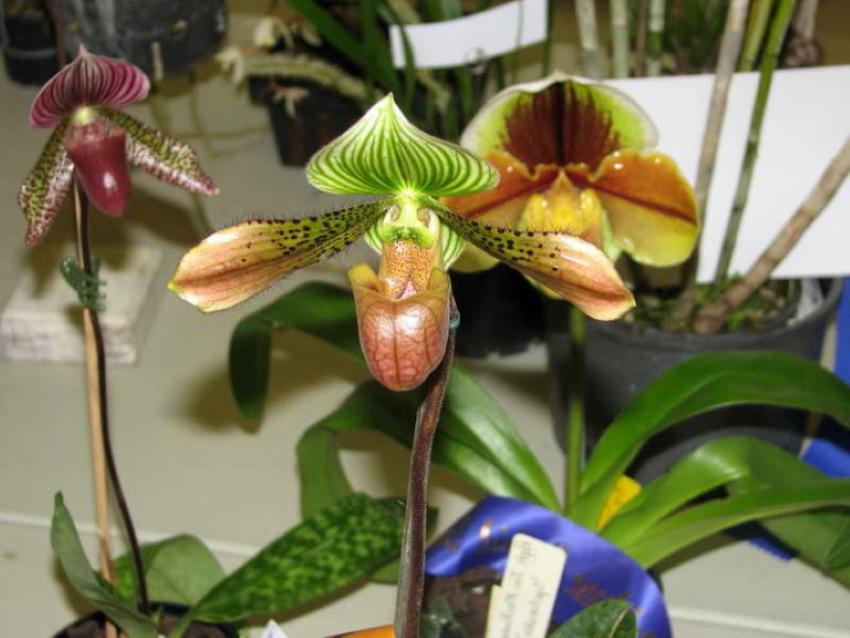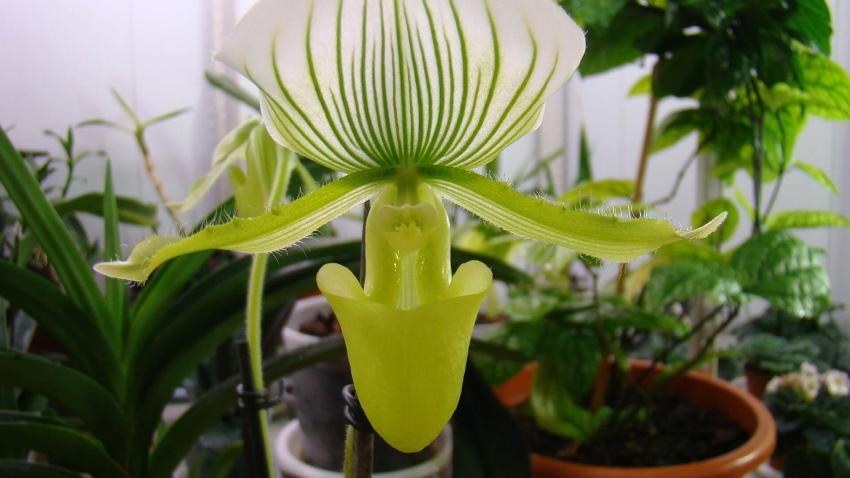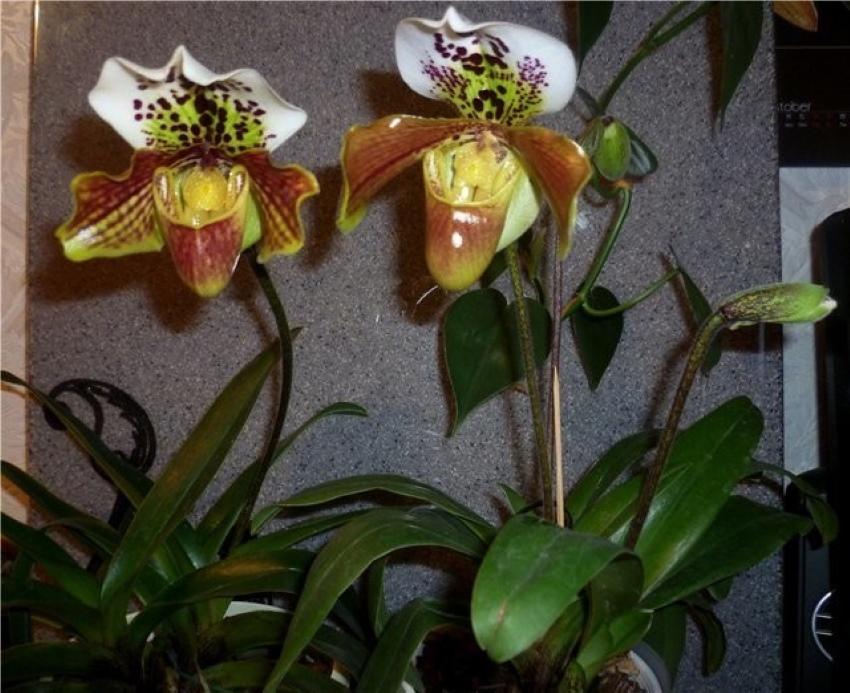How to grow papiopedilum lady's slipper at home - we study the features of an unusual orchid
 Each orchid is already a perfect creation of nature, but among these exotic beauties there is also a completely original plant. Wonderful flowers - papiopedilum shoes are immediately recognizable even on a densely packed shelf with plants. Those who want to have it in their collection should know how to grow the papiopedilum lady's slipper at home. So, epiphytes - phalaenopsis have the same requirements and conditions of detention. However, this culture requires an individual approach to each bush. When buying a flower, do not forget to find out exactly what species it belongs to.
Each orchid is already a perfect creation of nature, but among these exotic beauties there is also a completely original plant. Wonderful flowers - papiopedilum shoes are immediately recognizable even on a densely packed shelf with plants. Those who want to have it in their collection should know how to grow the papiopedilum lady's slipper at home. So, epiphytes - phalaenopsis have the same requirements and conditions of detention. However, this culture requires an individual approach to each bush. When buying a flower, do not forget to find out exactly what species it belongs to.
How to grow at home a lady's slipper pafiopedilum - features of the content

Now about the lighting: it's easier with this, almost all orchids - shoes prefer diffused light. Even on the north window, the sun is enough for them. But the flowers on the southern windowsills will have to be shaded.
Notice that the green leaves have acquired a crimson hue? This orchid thus tells you about the excess lighting.
 And the last thing: the temperature of the content - here, again, it all depends on the species. However, it is not necessary to know the exact name of the flower. The color of the leaves will help determine the thermophilicity. Variegated orchids like warmth, while green-leaved ones prefer cool content. In general, for all shoes, a temperature of 18 - 25 degrees is recommended. And in order for them to bloom, the plant needs to organize a dormant period in a cool room (not lower than 10 ° and not higher than 15 ° heat). But the requirement for air humidity for all pafiopedilums is the same - it must be high. That's just to reach values of at least 50% better not by spraying. It will be more expedient to just put the pot on a pallet with wet expanded clay.
And the last thing: the temperature of the content - here, again, it all depends on the species. However, it is not necessary to know the exact name of the flower. The color of the leaves will help determine the thermophilicity. Variegated orchids like warmth, while green-leaved ones prefer cool content. In general, for all shoes, a temperature of 18 - 25 degrees is recommended. And in order for them to bloom, the plant needs to organize a dormant period in a cool room (not lower than 10 ° and not higher than 15 ° heat). But the requirement for air humidity for all pafiopedilums is the same - it must be high. That's just to reach values of at least 50% better not by spraying. It will be more expedient to just put the pot on a pallet with wet expanded clay.
Caring for indoor papiopedilum
 Slightly different requirements for the lady's shoe and for care, especially for watering. The leaf plates of the plant are not so fleshy as to store moisture, and they do not have pseudobulbs. Therefore, thick roots should be kept in a moist substrate all the time.
Slightly different requirements for the lady's shoe and for care, especially for watering. The leaf plates of the plant are not so fleshy as to store moisture, and they do not have pseudobulbs. Therefore, thick roots should be kept in a moist substrate all the time.
In addition, it is worth noting the following nuances of growing indoor papiopedilums:
- They require frequent feeding (with every 3 - 5 watering), but with a less concentrated solution. Liquid mineral fertilizer for orchids is suitable, only you need to dilute it 2 times more than indicated in the instructions. During the dormant period, it is enough to fertilize the flower once a month.
- Also, every 4 - 5 weeks, it is advisable to rinse the soil well in the flowerpot so that salts do not accumulate.
- After the end of flowering, it is better to cut the peduncle so that it does not take away power from the outlet.
- From mid-November until the appearance of a new peduncle, the orchid should be kept in a cool room, especially if it has spotted leaves. Without a dormant period, it is unlikely to bloom.
- Young bushes are transplanted annually, adults - every 2 years. It is better to use an opaque plastic pot. In it, the soil does not dry out as quickly as in ceramic.
At home, the lady's slipper does not tie seeds, therefore it reproduces only vegetatively, by dividing the bush. The procedure can only be carried out with a highly overgrown plant. Moreover, each section should have not one, but three sockets. This increases the chances of rooting.